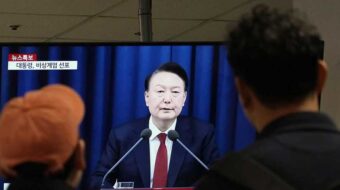CLEVELAND — Ohio voters roundly defeated four proposed constitutional amendments on the ballot on Nov. 8. Simply stated, the amendments dealt with absentee voting (Issue 2), campaign finance laws (Issue 3), how election districts are drawn up (Issue 4) and how elections are run (Issue 5).
The proposed amendments were promoted by supporters as reforms that would make elections fairer and reduce the influence of both money and partisan politics in elections. Opponents argued that the amendments were full of loopholes, poorly written and would take away voters’ voice and the power of their vote. The amendments, as they appeared on the ballot were thousands of words in length. Some were extremely difficult, if not impossible, for the average voter to understand.
Millions of dollars were poured into the campaign to try to sway voters one way or the other. In the end, a confused electorate voted “no” to all four amendments.
The Ohio AFL-CIO came out early in favor of the amendments. In contrast, the head of the Democratic Party in Cuyahoga County, Jimmy Dimora, did extensive radio announcements and voicemail blasts opposing the measures. The Dimora messages were paid for by Ohio First, the main group opposing the amendments.
Ohio First is identified by the Ohio Chamber of Commerce as largely Republican partisans who came together to defeat the reform amendments. Ohio First’s chief spokesperson is Republican state Rep. Kevin DeWine. According to the Nov. 7 issue of The Nation magazine, Ohio First ran a big-budget campaign to defeat the reform amendments, with most of the money coming from sources outside Ohio.
There are many lessons to be learned from this recent battle for voters’ minds, and proponents who led the campaign will no doubt be analyzing the results for many months.
One lesson is that an electorate faced with too many choices, written in complex language, will tend to vote no.
A second lesson is that extensive, clear public education usually takes a long time. Many regular voters never heard of the amendments as late as the week of the election itself.
A third lesson is that disunity among groups is a prescription for defeat.
A fourth lesson is that when you want to undertake anything this massive, you need to bring all of the key players to the table from day one to discuss the plan and get buy-in. This was not done.
Apparently, the originators of the campaign drafted the language of the proposed amendments on their own and then presented this language to labor and others as a fait accompli and asked them to support it. This incorrect way of working, led by middle-class forces, played a role in limiting the involvement and buy-in of others.
Finally, some voters, while they support election reform, did not think the route for winning it lay in taking the very serious step of amending the state constitution rather than passing legislation.
It would be a mistake to conclude that Ohio voters do not care about election reform. They do, many passionately. This issue is not dead in Ohio and will no doubt be revisited in the future. Ohio is, after all, the state which turned the tide for Bush in 2004.









